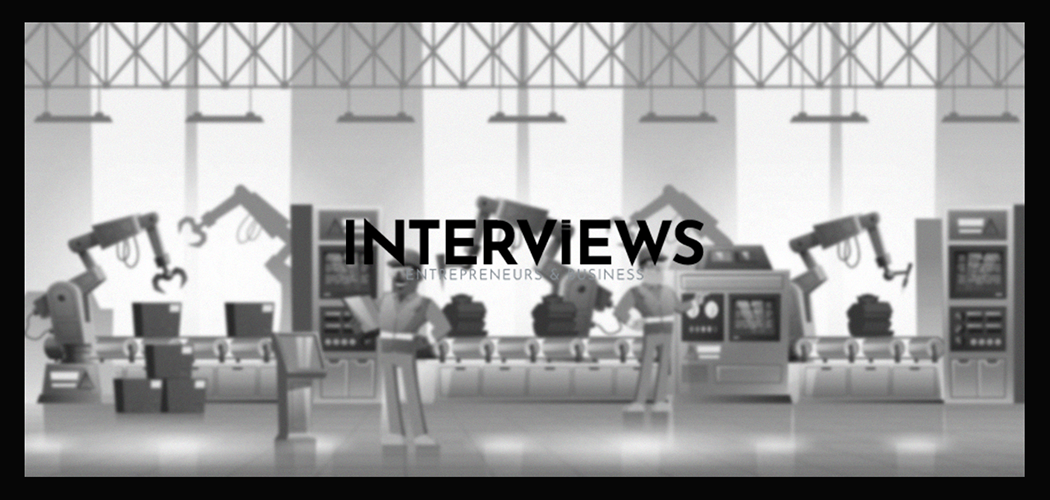Finding the right manufacturer or supplier? It’s like looking for a soulmate. You want someone who will meet your expectations without disappearing after the first round. Let’s explore this important journey together.
Finding Your Production Soulmate: Manufacturers and Suppliers
Finding a manufacturer or supplier is vital for your business. This process can decide your fate. You want someone dependable, affordable, and efficient (unless your product is a luxury item). In that case, the price is negotiable.
Where to Begin Your Search? (Spoiler: It’s Not Under a Rock)
Today’s digital age is a blessing. Forget about carrier pigeons; use the internet.
- Online B2B Marketplaces: The Digital Bazaar
- These are vibrant online platforms where suppliers and manufacturers connect. Use sites like Alibaba, Faire, and DHgate. They are goldmines. ThomasNet and Global Sources join this group.
- They serve like speed dating; quick introductions with numerous options. Choose wisely and not just based on visuals.
- Online Directories: The Yellow Pages on Steroids
- Picture the Yellow Pages, but online and functional. Use ThomasNet, Kompass, Maker’s Row, and Finding MFG as your digital directory for suppliers.
- WholesaleCentral, Worldwide Brands, and SaleHoo help find wholesale suppliers if reselling is your strategy.
- Industry Trade Shows and Expos: Face-to-Face Frenzy
- Want to meet suppliers in person? Trade shows and expos offer great opportunities. They focus on real connections rather than awkward panels.
- You get to see products up close and gauge legitimacy.
- Networking and Referrals: Who You Know (and Who Knows Someone)
- Your network can be invaluable. Ask questions! Professional networks, industry contacts, and online communities can offer referrals.
- Utilize LinkedIn, industry groups, and forums. Someone knows someone.
- Search Engines: Google-Fu to the Rescue
- Google can be your best friend. Use targeted searches like “[your product] manufacturer” to uncover potential partners.
- Get creative with keywords. Think like your ideal supplier.
- Reverse Sourcing: The Detective Approach
- Wonder who supplies top brands you see online? Time to be a detective. Discover brands you admire, then identify their suppliers.
- Follow clues; it leads you to manufacturers instead of gingerbread houses.
- Local Wholesale Markets: The Brick-and-Mortar Dig
- Don’t overlook local markets! These can help, especially if you need specific regional products.
- Sourcing Agencies and Tools: Outsourcing the Search
- Feeling overwhelmed? Sourcing agencies serve as matchmakers. They specialize in finding your suppliers.
- These agencies save time, helping you avoid endless online listings.
Making Contact: It’s More Than Just Saying “Hello”
After identifying potential manufacturers, it’s time to connect. Don’t send a generic “Hi, want to work with me?” email. Be professional in your approach.
- Introduce Yourself (and Your Company, if Applicable)
- Start with a solid introduction. Who are you? What does your company do? What’s your role? Avoid mystery; be clear.
- Clearly Explain Your Product Specs
- This step is essential. Manufacturers need details—don’t assume they know your needs.
- Share specifics about design, materials, and quantities. Clarity prevents issues later.
- Inquire About Their Capabilities (The Nitty-Gritty)
- Now, ask key questions. What manufacturing processes do they use? What are lead times and pricing? Ask about limitations too.
- This is your chance to gather crucial information.
- Request Samples (The Proof is in the Pudding)
- Always request samples. This helps you assess quality before commitment.
The Supplier Showdown: Evaluation and Selection
You have quotes and samples now. Next comes the big decision—who will be your manufacturer? It’s like judging talent shows, but with higher stakes.
- Quote Comparison: The Price is Right (…But Not Always Everything)
- Yes, compare prices, but don’t skimp on quality for the lowest option. Balance cost and quality.
- Quality, Cost, and Lead Times: The Trifecta of Decisions
- Quality, cost, and lead times are crucial for selecting suppliers. Quality impacts satisfaction, cost hits profits, and lead times affect delivery.
- Facility Visits (If Possible): The Factory Field Trip
- If possible, visit their facility. This lets you see operations and gauge professionalism.
- Reference Checks: The Backstory Scoop
- Always check references. Speak to past clients for direct feedback.
- Online Reviews: The Digital Grapevine
- Review sites like the Better Business Bureau offer insights. Check public opinions.
- Supplier Legitimacy: Spotting the Real Deal
- Verify credentials, certifications, and quality standards of suppliers. Ensure they’re legitimate operators.
Negotiation and Contracts: Let’s Make a Deal (and Write it Down)
You found ‘the one’! Now for negotiations and contracts. This is serious business, not just a handshake.
- Negotiating Terms and Conditions: The Art of Give and Take
- Negotiate everything—payment terms, shipping, quality control, etc. Haggling is expected, but remain reasonable.
- Contracts: Put it in Writing (and Make it Legally Binding)
- Create a written contract with clear terms. This is crucial for when disputes arise.
- Communication Channels: Keeping the Lines Open
- Set up communication channels early. Identify who to contact for various issues to prevent misunderstandings.
Decoding Manufacturing Costs: Where Does Your Money Go?
Understanding costs is key in manufacturing. Let’s break down where your budget goes during production.
- Direct Costs: The Obvious Spenders
- These are costs related directly to production.
- Raw Materials: What comprises your product.
- Direct Labor: Payments for workers involved in creating the product.
- Packaging: The product’s presentation.
- Power & Fuel: Keeping machines operational.
- Transportation: Moving goods around.
- Indirect Costs (Overhead Costs): The Sneaky Spenders
- These costs keeps operations running, but don’t directly create products.
- Rent/Mortgage: The cost of housing your business.
- Utilities: Essential services like electricity and water.
- Maintenance & Repairs: Keeping equipment functional.
- Depreciation: Deterioration of equipment value.
- Salaries (Administrative Staff): Wages for support staff.
- Insurance: For protection against risks.
- Taxes: Government contributions.
- Advertising and Marketing: Promoting your product (often viewed as overhead).
- Factors Influencing Costs: What Makes Prices Go Up (or Down)
- Multiple factors can affect manufacturing costs.
- Production Volume (Economies of Scale): The more you produce, the cheaper each unit becomes.
- Labor Costs: Vary widely based on location and expertise.
- Raw Material Prices: Fluctuating commodity costs impact expenses.
- Equipment Efficiency: Efficient machines lower long-term costs.
- of Labor: Skilled workers are quick. They produce high-quality work. This impacts cost and efficiency.
- Overhead Costs: Keeping overheads low helps to keep overall costs down.
Product Development and Manufacturing Process: From Idea to Reality
Transforming an idea into a product defines product development and manufacturing. It is a journey, not a sprint. Well, maybe unless you are facing a tight deadline.
- Research: Know Before You Go
- Begin with research. It is like reading a map before driving.
- Market Research: Who is your target market? Is there a demand for your product?
- Similar Products: What do competitors offer? How can you do better or differently?
- Design and Prototyping: Sketch it, Build it, Break it, Fix it
- It is time to get visual and practical.
- Accurate Design: Detailed specifications matter. No vague sketches or napkin doodles. Think blueprints, not random drawings.
- Building and Testing a Prototype: Create a prototype. Test it. Break it, figuratively speaking. Iterate and improve upon it.
- Legal Requirements: Playing by the Rules
- Don’t skip the legal aspects.
- Checking Necessary Legal Requirements: Product safety standards, labeling laws, and industry regulations are important.
- Intellectual Property Protection: Consider patents, trademarks, and NDAs. Safeguard your ideas fiercely.
- Materials: The Stuff Your Product is Made Of
- Sourcing materials is essential.
- Finding Materials (or Similar Ones): Get what is needed, or a suitable substitute if ideal materials are tough to find.
- Direct Materials: Raw materials and components constitute your product’s building blocks.
- Budgeting and Feasibility: Can You Actually Make Money?
- Time for a reality check.
- Budgeting Product Cost: Calculate all related costs. Can you secure profit?
- Evaluating Feasibility: Is this product actually possible? Avoid falling in love with doomed ideas.
- Scaling Up: From Small Batch to Big Time
- Think long term during this phase.
- Discuss Scaling Up Your Product: Will your manufacturer handle larger orders?
- Manufacturing Plan, Launch Strategy, Continuous Improvement
- Manufacturing plan: Logistics and production schedules are crucial. They are the tools to make it happen.
- Launch strategy: Determine how to bring the product to market.
- Continuous Improvement: Manufacturing evolves. Look for ways to improve quality and efficiency continually.
Reselling and Wholesale: Buying to Sell
Reselling and wholesale serve as a good form of middleman activity. You source products for sale, not for manufacturing. Think of it as curating a collection instead of making from scratch.
- Finding Suppliers for Reselling: The Sourcing Hunt, Round Two
- Where can you find these reselling gems?
- Online directories: WholesaleCentral, Faire, Alibaba are useful resources.
- B2B Marketplaces: A valuable avenue for wholesale sourcing.
- Referrals and Networking: Networking proves effective here, too.
- Reverse Sourcing: Identify successful resellers on Amazon and explore their suppliers.
- Evaluating Supplier Legitimacy (Again!): Double-Checking is Key
- Legitimacy matters more when reselling. You risk your reputation based on another’s product.
- Checking business credentials, certifications, product quality standards: Complete your due diligence here.
- Requesting Samples: This step is vital. Ensure product quality meets your standards.
- Negotiating terms: Price, Minimum Order Quantity (MOQ), and delivery schedules are crucial; negotiate professionally.
- Factoring in shipping costs, customs, and taxes: Take care of these issues to protect your profits.
- Dropshipping Suppliers: The Hands-Off Approach
- Dropshipping suppliers handle shipping directly to your customers. Your focus is on marketing and sales. It poses less hassle but may have lower margins. Weigh the pros and cons carefully.
- Profitability in Reselling: Making Cents (and Dollars)
- Is reselling profitable? Several factors influence this.
- Product selection: High-demand products with good margins will succeed.
- Sourcing Methods: Efficient sourcing translates to enhanced profits.
- Time and effort: Reselling requires substantial work, including marketing and customer service. Consider this time invested.
- Market Demand: Is there a genuine market for your products?
Finding a Legit Vendor: Avoiding Scams and Shenanigans
In the chaotic world of manufacturing and supply, authentic vendors emerge as your sheriffs. Finding them involves detective skills to avoid bad deals.
- Search the Web (Beyond the First Page)
- Avoid stopping at page one in Google. Legitimate vendors often hold a substantial online presence.
- Check Whom They’ve Worked For (Name Dropping – the Good Kind)
- Who were their clients? Reputable vendors flaunt their client history. Customer lists serve as social proof.
- Check Where They Are Located (Geography Matters)
- A physical location reveals much. Is it a real factory or just an online facade? Verify their address and facilities if possible.
Country of Origin Labeling: Where Was it Made?
Country of Origin Labeling (COOL) matters legally. It demands disclosure about where your product is made. Transparency matters and can be required by law.
- Requirement to Disclose the Country of Manufacture
- Understand the rules in your product category and market. Mislabeling can attract fines and damage your brand image.
Product Pricing: Show Me the Money!
Setting product prices is part art, part science. Get it wrong, and you either miss profit or chase customers away.
- Cost-Plus Pricing: Simple, but Effective?
- This approach is straightforward. Sum all costs then add a profit margin.
- Adding up all costs: Materials, labor, overhead, packaging – each penny adds up.
- Setting a profit margin: Decide how much profit you want on each unit sold.
- Calculating All Costs: Leave No Stone Unturned
- Pursue meticulous calculations of costs. Mistakes here can be costly mistakes.
- Aiming for Markup: The Multiplier Effect
- The markup reflects profits as a percentage of costs. Aim for at least double your cost or even 2.4 to 2.5 times for retail prices. Wholesale prices differ with lower markup but higher volume expected.
- Markup and Margin Understanding: Know Your Numbers
- The terms markup and margin relate but differ. Understand both clearly. Margin reflects profit as a percentage of selling price. Confused? Search for clarification online.
- Wholesale and Retail Prices: Different Channels, Different Prices
- Your wholesale price (to retailers) remains lower than retail price (to consumers). Include this in your pricing strategy.
Miscellaneous Tips: Golden Nuggets of Wisdom
A few additional pro tips to cap off this guide since we are generous like that.
- Ask for Wholesale: Just Ask!
- If buying in bulk, always request wholesale pricing. They won’t offer it if you don’t ask.
- Contacting Suppliers: Be Proactive and Polite
- Do not hesitate. Communicate with multiple suppliers; professionalism goes a long way.
- Check Business Registration, Licenses, and Permits: Legitimacy Checklist
- Confirm business registration, licenses, and permits to reduce risks associated with shady operators.
- Check the Company’s Website: First Impressions Matter
- A professional website indicates legitimacy. No site or poorly maintained sites signal a warning.
- Look for Red Flags: Trust Your Gut (and Logic)
- If a deal feels too good to be true, proceed with caution. Be skeptical of low prices or overly eager suppliers avoiding direct questions.
The quest for the right manufacturer or supplier is a journey filled with research and communication. It requires evaluation and a dose of skepticism. With the right approach, you can form connections that support your business growth. Go forth and source like a pro!





